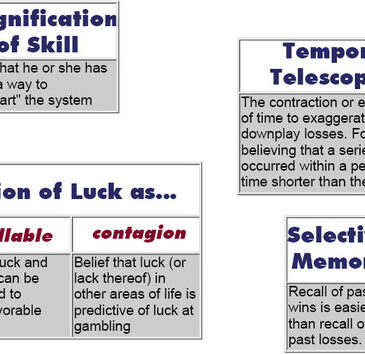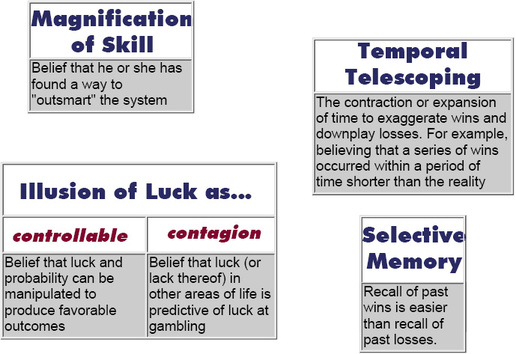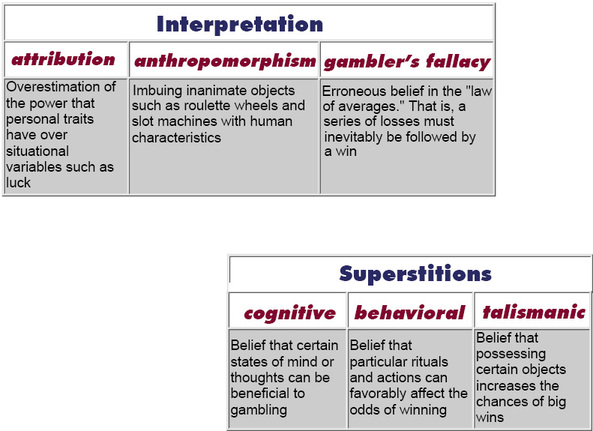A primary aim of cognitive-behavioral therapy (see WAGERs 2(20) and 4(7)) is to correct false beliefs that contribute to a particular pathology. For example, a patient with depression might ruminate excessively on a particular set of personal misfortunes. A cognitive-behavioral therapist might try to correct the scheme of negativity used by the patient to understand and process information, helping
him or her to perceive both the postitive and negative aspects of events. One distorted cognitive scheme relevant to gambling is the misshapen probability weighting curve disscussed in WAGER 4(26). What other mistaken beliefs are common in pathological gamblers? Toneatto (1999) reviews several such beliefs, describing each in detail. A sample of his work is presented below. This review will likely stimulate discussion. Many non-gambling readers may recognize one or more of these distorted schema in themselves, suggesting that these beliefs are not specific or limited to pathological gambling. Researchers have conducted few studies that measure the prevalence of these beliefs among pathological gamblers, let alone a study of the general population for use as a comparison group. Nevertheless, Toneatto’s partial list may provide important clinical fodder for practioners of cognitive-behavioral therapy who might encounter patients with gambling problems.
Source: Toneatto, T. (1999). Cognitive psychopathology of problem gambling. Substance use & misuse, 34(11), 1593-1604.
The WAGER is funded, in part, by the National Center for Responsible Gaming, the Massachusetts Department of Public Health, the Andrews Foundation, the Addiction Technology Transfer Center of New England, the Substance Abuse and Mental Health Administration Services, and the Center for Substance Abuse Treatment.






